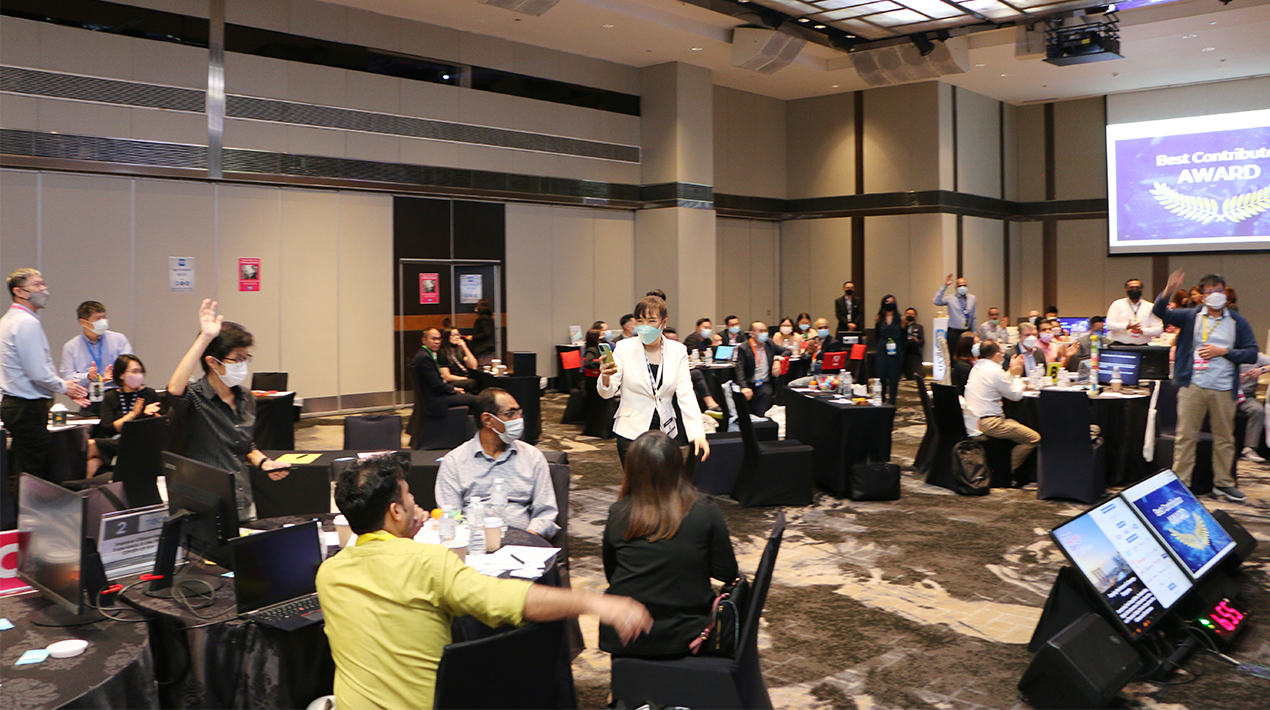
Since the advent of the pandemic, the public sector has had to rapidly embrace digital technologies. Yet, governments still have some way to go in meeting citizens’ expectations for a seamless, personalised, equitable and intuitive digital service delivery.
The crisis has forced governments to rethink how to best serve citizens through proactive, transparent communication and citizen-centric digital offerings with always-on service. Indeed, citizens now expect more digitally-enabled public services and many want to have more of a say in how they should be delivered. At the same time, a segment of citizens lacks the skills or means to access digital services.
The Singapore government successfully pivoted and was able to respond decisively and swiftly to the COVID-19 outbreak with a suite of digital tools to help disseminate timely and accurate information to Singaporeans.
As the nation moves out of the pandemic, the question is: How can organisations harness technology to shape a stronger future in Singapore?
The 7th Annual Singapore OpenGov Leadership Forum 2022, Day 2, was held on 18 May 2022 at Singapore Marriott Tang Plaza Hotel. It convened digital leaders from the Singapore public sector and financial services industry to discuss, deliberate, share and plan for the next phase of transformation.
Humanising the digital transformation

Mohit Sagar, Group Managing Director, and Editor-in-Chief, OpenGov Asia, kicked off the session with his opening address.
“We’re running up against the metaverse,” Mohit claims, pointing out the growing trend of the metaverse and how the public sector is going to utilise that space to enhance public services. The metaverse is the new direction that people are heading towards and data is catalysing the public services and the future.
While digital development is necessary it has to be inclusive and comprehensive. For example, with a population that has increased longevity, Singapore is using technology to take care of the elderly. In the same manner, it needs to cater to diverse segments and communities within the total population.
For Mohit, innovation needs to be pervasive, and the public sector needs to stay abreast. People must be afraid of technology. A case in point is cryptocurrencies which can be the next game-changer irrespective of the dangers they could pose – know the issues and mitigate the risk.
“We have been coping the past two years with ‘band-aid’ technology,” Mohit feels. “These ad hoc solutions and platforms that were used during the pandemic need to be scaled up, taken forward and mainstreamed.”
Technology has the potential to elevate the quality of life, improve healthcare and benefit everyone in all spheres and stages of life. Zendesk, TIBCO, Intel, Adobe, WalkMe and SAS are all in the business of improving services.
The world is changing rapidly and the ways people are utilising technology to solve problems need to keep pace. “These trends are here to stay,” Mohit states emphatically.
To cope with the new demands of the citizens, organisations need to leverage data, embrace AI and pivot towards automation.
In conclusion, he encourages delegates to look for partners who are experts in their field of work who can help organisations keep their glass full so that they can focus on their business objectives.
Fireside Chat: Role of High-Performance Computing – Advancing Singapore’s Plans for a Digitally Transformed Smart Nation
 Mohit Sagar, Group Managing Director, and Editor-in-Chief, OpenGov Asia and Associate Professor Tan Tin Wee, Chief Executive, National Supercomputing Centre (NSCC) sat down for a fireside chat to discuss the outlook of High-Performance Computing in Singapore’s digital transformation journey.
Mohit Sagar, Group Managing Director, and Editor-in-Chief, OpenGov Asia and Associate Professor Tan Tin Wee, Chief Executive, National Supercomputing Centre (NSCC) sat down for a fireside chat to discuss the outlook of High-Performance Computing in Singapore’s digital transformation journey.
Tin Wee shares that NSCC originated from a decade of computerisation. While it is a petaflop system, the whole world is on the edge of digitally clocked Exa scaled systems. In that regard, Singapore is behind. Developed countries have understood that to drive the frontiers of technology, one needs to be at the cutting edge of technology.
“To outcompete other nations you need to out-compute,” he opines. “The government understands it and wants to move towards super computerisation of the public sector and industries.”
Mohit was curious to know where the use cases for supercomputers are. Tin Wee shares that there are projects to help people in the AI industry. Besides the traditional modelling and simulation in the engineering and manufacturing industries, AI communities are actively going on board.
They have made inroads with the weather community who have started to use it for climate modelling and predicting sea level. Most recently, they have launched the HPC Innovation challenge for the environment and urban design. The healthcare sector, namely NUHS and SingHealth, has also deployed two edge supercomputers.
In conclusion, Mohit believes that supercomputers remind people of the need to push the frontiers of technology and take a serious look at how technology can help lubricate their existing business.
Smart data in smart cities
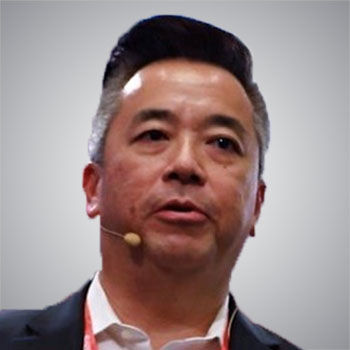
Christopher Tan, Partner Revenue Acceleration, Director, APJ, Intel spoke next about smart data analytics for smart cities and intelligent transportation.
Setting the tone of where the world is at, Christopher asserts the need to tackle problems that are still there: Congestion and pollution, Dangerous roads, Public health concerns and Decaying infrastructure
However, there are other pressing challenges: Budget prioritisation, Reduced time to market, Market fragmentation and Targeted spending
IoT Devices are rapidly increasing smart cities data and public service and transportation are a big part of it. Smart Cities are one of the key sectors within the IoT space. IoT enables Smart Cities data. However, the value will be created based on how well cities deploy technologies to capture and utilise data.
Christopher shared Intel’s data-centric vision for IoT
- Open Data Platforms with Intelligence from EDGE to cloud
- Intel Advantage with Proven solutions built for IoT
- Edge Workload Convergence for Greater efficiency and value
Through investments in AI, 5G, and Edge solutions, Intel is helping technology providers put data to work – At the edge and in the cloud – To help cities make data-backed decisions to optimise efficiency, streamline mobility, and create more value for agencies and citizens.
He adds that Intel Smart Edge Open and reference solutions like the Converged Edge Reference Architecture (CERA) provide an easy button for connectivity and deployments at the Edge.
Intel provides the hardware building blocks but also reference designs that provide a starting point. Software are tools that allow people to build their own applications before deployment.
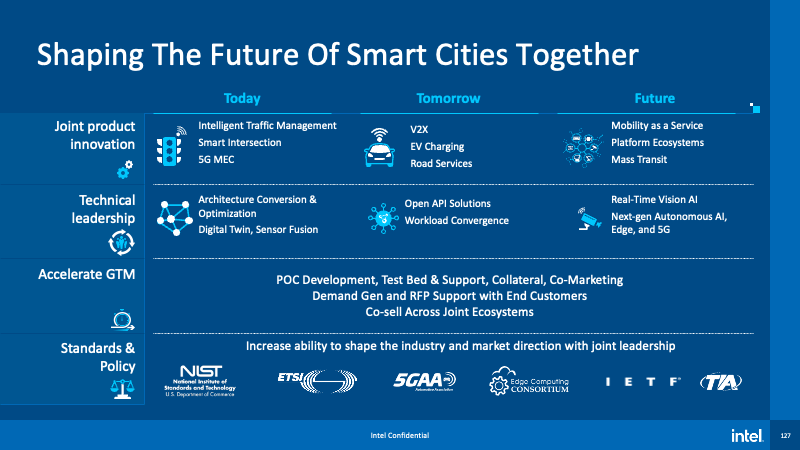
Momentum is building and cities around the world are crossing the chasm. Leadership around the world are taking notice and have new incentives to push harder than before – they are in a better position to innovate.
In conclusion, IoT ties Ai, 5G and Cloud together. These supporting technologies, when combined with intelligence everywhere, make smart cities a reality. He emphasises that IoT is the next big thing that will pave the way to major change.
Transforming user experience to meet changing demands
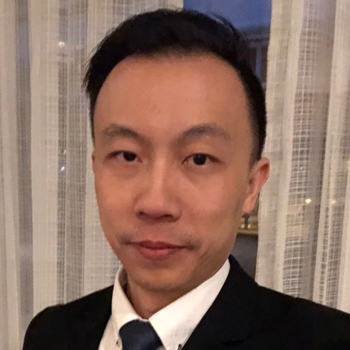
Andy Pang, Director, Solution Engineering, ASEAN spoke next on ways to improve the user experience through technology.
“Almost 50% of employees will continue to work remotely post COVID-19,” Andy quotes. “Remote work was already becoming more popular before the COVID-19 pandemic and the trend is now accelerating.”
A larger remote workforce will challenge HR leaders to rethink their approaches to recruiting and managing talent. It is against that backdrop that Andy believes that citizen experience is more important than ever.
Data and connectivity will become more important, Andy claims. There are some implications of that fact on how data can be used to improve citizen experience:
Leveraging IoT / unstructured data to enrich actionable insights: Transforming “data-lake” to become “data-fabric” – ability to use both structured and unstructured data in the same way
Add “Agility” to the data-lake / data-fabric: Everyone in the enterprise should be able to access trustworthy data – with their preference – instantly
Operational AI at-scale for real-life citizen experience, such as saving lives: AI at the edge – with IoT and unstructured data
There were several use cases which Andy shared:
- COVID Vx PGS Digital Programme
IoT data was deployed to optimise the distribution of vaccines through real-time GPS Temperature Tracking, automate BOH Protocol and create a work centre performance management.
- NUHS
TIBCO helped to improve cancer detection rates by predicting risks and automating test referrals with AI-driven modelling and decision-making. It helped to set up an Integrated Health Systems to seamlessly exchange information between other medical authorities and to leverage their existing AI assets so that MUHS could improve patient experience, using the new smart integration hub to achieve360 visibility of the life-dependent information between critical medical systems.

In conclusion, Andy believes that TIBCO helps to unlock the potential of real-time data for making faster, smarter decisions. Their Connected Intelligence Platform seamlessly connects any application or data source; intelligently unifies data for greater access, trust, and control; and confidently predicts outcomes in real-time and at scale.
He encouraged delegates to reach out to him if they would like to find out how they can leverage the technology of TIBCO to improve the experience of citizens.
Polling results for the morning session
Throughout the morning session, delegates were polled on different topics.
The first poll inquired about key business initiatives for the next 12-18 months. Most (46%) were focused on improving agility and delivery through Cloud Migration. Over a third (34%) are 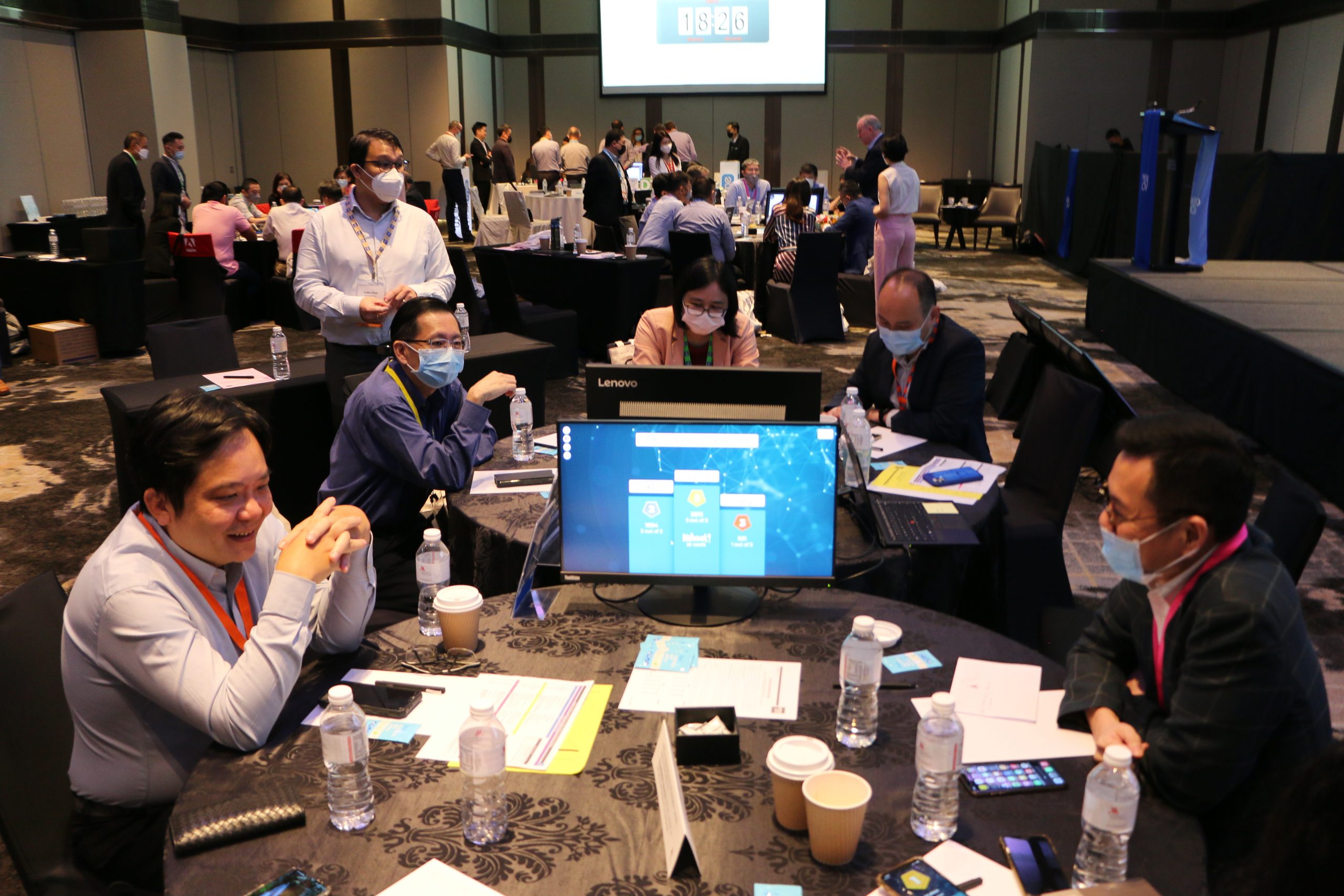 concentrating on improving employee productivity through digital technology, 14% are looking to enable real-time performance visibility and analysis (14%) and 6% are embedding compliance transparently in applications.
concentrating on improving employee productivity through digital technology, 14% are looking to enable real-time performance visibility and analysis (14%) and 6% are embedding compliance transparently in applications.
Delegates were then asked about what would have the bulk of their budget allocation in 2022 –2023. Over a third (38%) indicated that the bulk of their budget allocation would go to digitalisation of processes to deliver better or ‘Smart’ services, followed by embracing cloud technology, be it public or private (19%), enhancing or adopting AI and Analytics for improving outcomes through forecasting, prediction and optimisation (15%), and improving integrity and governance whilst reducing inefficiency (12%). The rest were equally divided between leveraging IoT to improve processes and productivity (8%) and data-driven initiatives such as Big Data/Data Lake (8%).
On the main challenge in their data strategy journey, most (37%) found the lack of data governance, data privacy and security concerns challenging. Others found the missing an overall strategy that crosses departments and teams (27%) challenge, followed by the data culture/literacy/skill across employees (20%) and the lack of a centralised tool for sharing and collaboration (17%).
Regarding key fears in moving to cloud, well over half (58%) were concerned about security and governance. The other delegates were split between the need to re-skill talent (33%) and operational costs (8%), while the rest were concerned about vendor lock-in (3%).
The subsequent poll asked delegates what they saw as the biggest challenge in digitalisation and cloud migration. Most (30%) found security and compliance risks the biggest challenge. The rest of the delegates found people and skillset (23%), legacy infrastructure (20%), data classification/data sovereignty/data residency concern (10%), executive support/top management strategy (10%), and budget (7%) challenging.
On their key priorities to enhance the service experience of citizens/ customers, delegates were evenly split between making it easy and convenient for people to reach out (34%) and personalised interactions (34%), faster time resolution (23%), 24/7 always-on support (6%), and the ability to serve multiple customers at one time (3%).
When asked about the top analytic adoption challenge in their organisation, most (48%) expressed that data quality and accuracy concerns were the top challenges. This was followed by a lack of talent and training (31%), limited access to analytics (14%) and tools being too complex and difficult (7%).
The next poll asked delegates about the requirement that is shaping their landscape to be agile with the business needs. Most (42%) felt that adapting to changing citizens/customer demands was a requirement. The rest of the delegates were split between the speed of change for applications, data and building/removing core business systems (35%), operational cost savings (12%) and complying with new government regulations (12%).
The final poll for the day asked delegates about the main motivator that is driving digital transformation. Most (38%) are motivated by the desire to speed up their time-to-market to fully capitalise on business opportunities or to serve citizens better. The rest of the delegates see a growing need to maximise value/insights from an increasing amount of data assets as a motivator (25%). Others are motivated to provide a consistent and seamless cloud-everywhere experience across a distributed organisation (25%) and improve their capability to manage the increasing amount of data at the edge locations while ensuring security and compliance (13%).
Deploying data in motion in government service
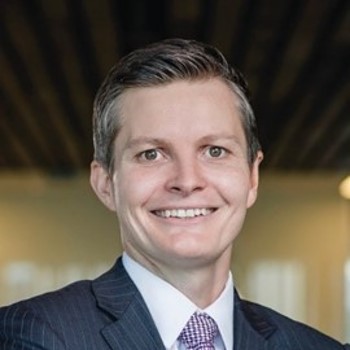
John Mackenney, Principal Digital Strategist, APAC, Adobe who followed, elaborated on the use of data in motion to transform service delivery as they strive to meet new citizen expectations.
John observes that there is a growing sense of urgency to get the digital experience right and strengthen public service delivery for the benefit of citizens and government. The building blocks can be put in place now to achieve the future state – a single government platform supporting modern content delivery, a deep understanding of citizen life journeys and tailored and contextual experience across all channels.
There are several pain points for citizens and businesses interacting with the government:
- Being required to provide information multiple times
- No single source of truth across government information
- Inconsistent and inaccessible content
- Difficulty finding the right information, at the right time, in the right context
The events over the past 18 months have also clearly demonstrated the need for consistent, rapid communication during a crisis, and that is not expected to abate. Governments need the ability to rapidly send consistent, immediate public information during a crisis, he asserts.
Today, citizens expect smooth, personalised, and “always-on” experiences. For John, there are 4 key expectations:
- Trust and empathy: Citizens today expect more transparent, consistent, accessible, and responsive services. The relationship people have with services and governments has changed.
- Personalised and proactive updates: Governments are focused on delivering a greater level of satisfaction while reducing servicing costs.
- Journeys and segments: Citizens expect their digital journeys to be tailored to their needs.
- Respect privacy and preferences: Empowering citizens on how their information will be used and their right to be forgotten.
John notes that the challenge for governments now is in providing inclusive services for all. Some trends in the way leading governments are responding to support citizens and businesses during hardship:
- Citizen-Centric: Design services based on journeys
- Data-Driven: Making available data that can improve experiences and economic outcomes
- No one is left behind: Government services are inclusive and accessible to everyone
- Proactive & Responsive: Using real-time feedback to improve services.
- Connected and Collaborate: Ensuring citizens receive consistent and easy to understand information.
- Tailored on citizens’ terms: Citizens only need to tell the government once and consent to the government anticipating their needs.
According to John, understanding the demands and needs has been a challenging task that some governments and agencies are currently undergoing. Data in motion is the building block of success. It can enable governments to capture data and events from multiple channels and sources into a single solution to understand citizen life events and journeys; provide secure and compliant data exchange between agencies and across domains; and prepare for the cookieless future ensuring effective outreach on government programs.
Harnessing AI and automation to improve customer experiences

Shirley Poh, Senior Director, Enterprise Sales – ASEAN, Zendesk spoke next on the trends in customer service experience in the public sector.
“The rules of customer service have changed,” which has resulted in pressure on different fronts:
Rising customer expectations: Customers expect easy and accessible ways to connect that are personalised and engaging. They also want a more conversational, personalised experience.
Expanding the role of support: Internally, the role of customer support faces pressure to constantly do more with less. They are asked to reduce costs while driving incremental revenue growth by increasing customers’ Lifetime Value.
Market & workplace changes: While disruptive competitors are eating away market share, there are staffing and skill shortages and trying to navigate this hybrid work environment
The need to transform is imminent. Based on a study that Zendesk has done, they discovered that the most successful companies: Tailor to meet their business needs, Build experiences as unique as their customers, Integrate for a complete view of their customers and Scale with confidence
Among the most prominent public sector use case was the use of Zendesk in Tracetogether and Safe Entry, as well as IRAS live chat. Zendesk also worked with Fairprice to incorporate a self-service help centre. It resulted in a reduction in hotline calls, availability of tickets to provide tracking and performance measurement to improve response and resolution time.
In the latest report, Shirley observes that 86% of APAC customers believe that a positive customer experience makes them more likely to purchase again. That is a large percentage and can fuel business growth and expansion. With such demand for high-quality customer experiences comes its own set of challenges.
From Zendesk’s perspective, there are two areas of focus:
- AI/Automation
Shirley highlights the changing attitude to AI or automation – incorporating AIs and Chatbots into the workflow can help to make teams more efficient
- Conversational Customer Service
More organisations are building conversational experiences as end-to-end experience is important. In the case of chatbots, customers must have the opportunity to move from the bot to a live agent, with the agent already having all the context without the customer needing to repeat themselves.
In conclusion, Shirley believes that building on the CX experience has a tremendous impact on business outcomes, service excellence, agent experience and business operations. She encouraged the delegates to reach out to her to find out more about ways Zendesk can help in their organisation’s processes.
Fireside Chat: Innovation during the crisis – How digitalisation is transforming organisations
 The session was followed by a fireside chat with Mohit Sagar, Group Managing Director & Editor-In-Chief OpenGov Asia and Peter Forbes, Group Chief Digital Officer, National University Health System.
The session was followed by a fireside chat with Mohit Sagar, Group Managing Director & Editor-In-Chief OpenGov Asia and Peter Forbes, Group Chief Digital Officer, National University Health System.
Crises present us with unique conditions that allow innovators to think and create rapid, impactful change. For leaders, these conditions provide fertile grounds for transformation, with the opportunity to do our best to help, and for our teams to do their most innovative work in the service of our organisations and communities.
OneNUHS mobile application is one such example. The vision of OneNUHS was a seamless and paperless journey for the patients electronically. They wanted to release the features in a phased approach. The application is now 1 year old but in the partnership, they got the application went live earlier in December.
Moving forward, they are starting to bring in a clinical function such as an evidence-based screening approach where people provide information about their vaccination status, blood pressure, BMI etc. and it recommends a series of screenings that is individualised.
Singapore’s healthcare industry is held to high expectations and digital technology is seen as a way to deliver services more efficiently. There have been many healthtech-related innovations in recent years including technologies such as Telemedicine and Artificial Intelligence (AI). Mohit was curious about what Peter has observed regarding Telemedicine and Artificial Intelligence.
Telemedicine was incredibly important, felt Peter. They were running phone and video consults. Zoom was not integrated with their appointment system. They built the video consult journey within the app – from registration to seeing queue numbers and eventually having their consultation before receiving their medication.
From innovation out of necessity to innovation with purpose; transformation has become key to unlocking future growth and digitisation is catalysing these efforts. Mohit was keen to know how NUHS is leveraging digital technologies, specifically RPA, to gain a competitive advantage and become a future-ready organisation.
Peter shared that they adopted RPA to enter information for the dormitory swab operations. They took RPA into five core finance operations and made savings in FTEs (Full Time Equivalent). The equivalent of 8 FTE of human processing time was transferred to Robotic Process Automation. Freeing the staff from mundane repetitive tasks allows them to work on higher value-adding tasks.
While they started with a service-driven transformation vision, they are now moving into the clinical functions. They are currently looking at a digital health plan that is enabled by automation and AI, which empowers patients and residents and GPs with data that can improve healthy behaviour.
Peter concluded that innovation is required in a fast-changing world – technology is what will help to help organisations deliver better services in a short period.
Polling Results for the afternoon session
Throughout the afternoon session, delegates were polled on different topics.
The first poll inquired about key business initiatives for the next 12-18 months. Over a third (35%) are focused on improving employee productivity through digital technology, followed by  enabling real-time performance visibility and analysis (30%), improving agility and delivery through Cloud Migration (26%) and embedding compliance transparently in applications (9%).
enabling real-time performance visibility and analysis (30%), improving agility and delivery through Cloud Migration (26%) and embedding compliance transparently in applications (9%).
Delegates were then asked about what would have the bulk of their budget allocation in 2022 –2023. Over a third (36%) indicated that the bulk of their budget allocation would go to enhancing or adopting AI and Analytics for improving outcomes through forecasting, prediction and optimisation. Other delegates allocated the bulk of their budget to digitalisation of processes to deliver better or ‘Smart’ services (32%) and data-driven initiatives such as Big Data/Data Lake (18%). The remaining selected improving integrity and governance whilst reducing inefficiency (7%), embracing cloud technology, be it public or private (4%), leveraging IoT to improve processes and productivity (4%)
Inquiring about the main challenge in their data strategy journey, most (43%) found the lack of data culture/literacy/skill across employees challenging. The other remaining delegates selected the lack of data governance, data privacy and security concerns (24%), followed by the lack of a centralised tool for sharing and collaboration (19%) and missing an overall strategy that crosses departments and teams (14%).
On the key concern in the consideration to move to cloud, just over half (62%) were concerned about security and governance. Other delegates were evenly split between the need to re-skill talent (14%) and operational costs (14%), while the rest were concerned about vendor lock-in (10%).
The subsequent poll asked delegates what they saw as the biggest challenge in digitalisation and cloud migration. Just under a third (32%) found people and skillset the biggest issue. The rest of the delegates found security and compliance risk (28%) and data classification/data sovereignty/data residency (20%) problematic. The remaining delegates found executive support/top management strategy (12%), legacy infrastructure (4%), and budget (4%) to be of concern.
On their key priorities to enhance the service experience of citizens/ customers, 39% of delegates prioritised making it easy and convenient for people to reach out. The other delegates concentrate on providing personalised interactions (28%), faster time resolution (22%), the ability to serve multiple customers at one time (6%) and 24/7 always-on support (6%).
When asked about the top analytic adoption challenge in their organisation, most (60%) expressed that data quality and accuracy concerns were the top challenges. This is followed by a lack of talent and training (35%) and tools being too complex and difficult (5%).
The next poll asked delegates about the requirement that is shaping their landscape to be agile with the business needs. Delegates were split between the speed of change for applications, data and building/removing core business systems (45%) and adapting to changing citizens/customer demands (45%). The rest of the delegates were split between operational cost savings (5%), complying with new government regulations (5%)
The final poll for the day asked delegates about the main motivator that is driving digital transformation. Most (61%) are influenced by the desire to speed up their time-to-market to fully capitalise on business opportunities or to serve citizens better. The rest of the delegates see a growing need to maximise value/insights from an increasing amount of data assets as a motivator (26%). Others are driven by improved capability to manage an increasing amount of data at the edge locations while ensuring security and compliance (9%), and providing a consistent and seamless cloud-everywhere experience across a distributed organisation (4%).
Closing
In conclusion, Mohit thanked all the delegates for their active participation and emphasised the criticality of digital transformation in the age of COVID-19. Staying abreast of the technologies that can enable business outcomes, adapting to shifting cultures and providing improved experiences for citizens.
















